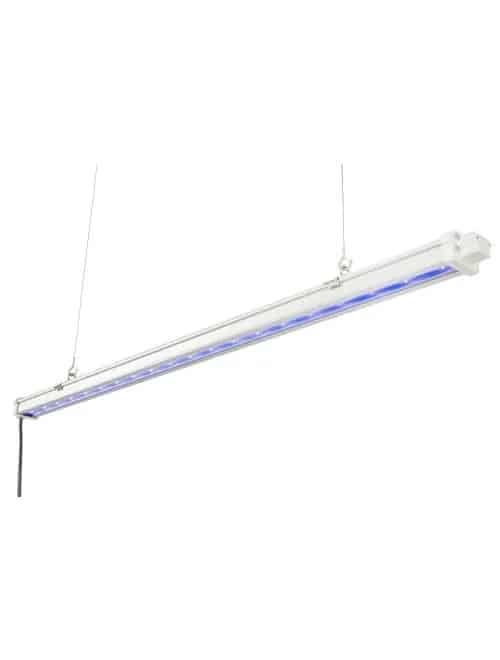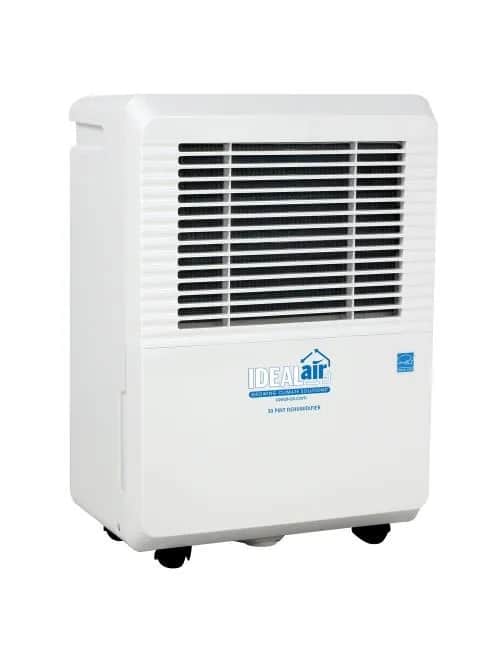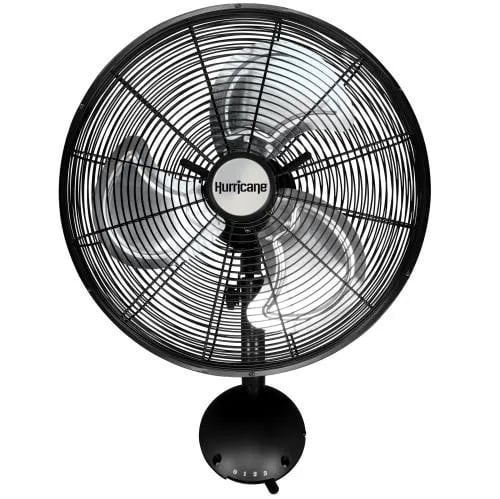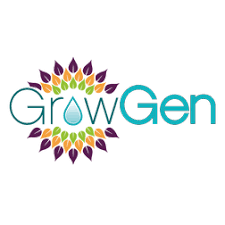Even experienced growers make mistakes in hydroponic gardens. With the help of our GrowPros, here’s a breakdown of the 12 most common hydroponics mistakes — and what you should do instead.
Common Hydroponic Gardening Mistakes
Even experienced hydroponic growers make mistakes. With the help of our GrowPros, here’s a breakdown of the 12 most common hydroponics mistakes — and what you should do instead.
Mistake #1: Not Doing Enough Initial Research
Hydroponic gardeners must know the specific needs of their plant species, but that’s only the start. Before buying hydroponic supplies, research what your plants require to grow in an indoor artificial environment.
What Growers Should Research About Hydroponics Before Buying Supplies
Understanding the hydroponic farming equipment your plants need before investing is critical. It prevents overspending or using incompatible products that don’t support your plant’s growing requirements.
Here’s what hydroponic gardeners should research before buying supplies:
- Research the various kinds of hydroponic systems and whether they would work with your plants’ growing requirements
- Learn more about growing media, nutrients, and grow lights
- Talk to experienced hydroponic retailers and discuss equipment options based on gardening goals
- Create a grow room supplies list with all the things you will need to purchase or DIY
Once growers understand which hydroponic supplies to buy based on their plant needs, they can create a successful hydro garden.
Mistake #2: Skimping on Hydro System Necessities
New growers often search for the cheapest options when setting up their hydro garden — sometimes resulting in low-quality products. Building a grow room on a budget is definitely an option, but skimping often won’t result in the best possible crop.
For example, low-grade hydroponic trays are made with cheaper plastics such as polystyrene and PVC. These materials can contaminate your crops and create additional costs for replacement. High-quality hydroponic trays doesn’t have to be expensive, but it’s worth skipping the cheapest option available in the long run.
How to Maximize Your Hydro Garden Budget
The best choice with a limited grow room budget is to start small and gradually expand.
To maximize your hydroponic garden spend, try to:
- Get the necessities first, such as grow lights instead of many plants
- Buy the best items possible with the budget available
- Add more complex equipment over time rather than all at once
- Consider the time and money you may waste on repairing or replacing cheap equipment
Maximizing your hydro garden budget can easily save time and money. Now that we’ve discussed avoiding financial mistakes, let’s explore common plant care mistakes hydroponic gardeners commonly make.
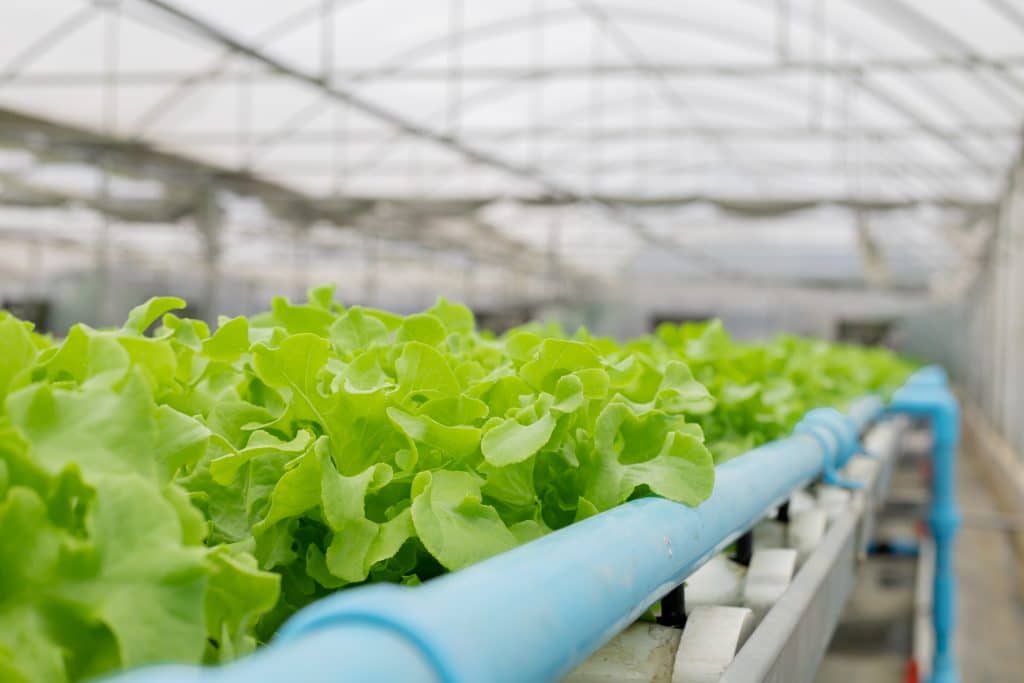
Mistake #3: Infrequent pH Testing
New hydroponic growers often test their crop’s pH inconsistently. Hydroponic plants require a slightly acidic pH between 5.5-6.5 for the best root nutrient absorption. Adjusting pH in nutrient solutions is critical because if it’s too basic or alkaline, it can cause plant damage, such as nutrient burn or stunted growth.
Measuring pH levels daily with pH meters allows growers to see the effects of modifiers used to balance the pH level. Less frequent testing can occur once growers become familiar with their crops and hydroponic system.
How to Test Hydroponic Plants’ pH Levels
Measuring the pH of your hydroponic plants cannot be determined by the naked eye.
Here are three ways to test pH levels:
- Basic and affordable litmus strips
- An electronic meter (EC)
- A liquid pH testing kit
Meters and liquid kits are usually the most accurate but are often more expensive than litmus strips. Many hydroponic growers prefer EC meters because they provide a numerical pH reading instead of deciphering color.
If you do opt for an EC meter, make sure to recalibrate it weekly. EC meter calibration is required to prevent production planning mistakes. Using an EC meter for an extended period without recalibrating can result in inaccurate pH measurements, negatively impacting plants.
Mistake #4: Failing to Clean Your Grow System
It’s critical to establish a daily cleaning schedule for your hydroponic garden. A clean and sanitized grow room protects growers and plants. Bacteria overgrowth could occur on plants and become abundant enough to cause the people that handle or consume them to become ill.
Plant disease can spread rapidly, and here’s why:
- Hot and humid grow rooms encourage microbe and pest growth
- Plants placed too close together cannot dry properly between watering and increase disease risks
- Poorly cleaned systems cause bacteria or infestation
Now that you know the signs to watch if your hydroponic system isn’t being cleaned properly, here’s how to fix them.
How to Keep Your Hydroponic Garden Clean
To keep your hydroponic garden clean, you’ll need insect and plant disease cleaning products.
Use these products carefully and as instructed on the labels to avoid plant contamination.
Here are five steps to clean your hydro system:
- Remove any dead or dropped plant matter
- Flush the system at least once weekly to prevent and reduce the risk of clogs
- Wash and sanitize all surfaces at least once a week with the right cleaning products
- Use the cleaning products away from the plants and in-between harvests
- Dilute the chemicals properly and rinse thoroughly – acidic vinegars can affect pH levels if not rinsed thoroughly after cleaning
Following the steps above or a maintenance checklist can help keep your hydro garden healthy.
Read more: Benefits of Using Hydrogen Peroxide in Hydroponics
Mistake #5: Creating a Hydroponic Garden That’s Too Big
Hydroponic gardens can be any size you desire — from home growers and cultivation facilities to vertical farms. The garden size you should strive for depends on your growing needs and hydroponic gardening knowledge. Many new hydro growers make the mistake of creating massive gardens without knowing how to properly care for such a big garden. The larger your hydroponic system, the more comprehensive the growing system and equipment will be.
How to Choose the Right Hydroponic Garden Size
If you’re new to hydroponic gardening, start with limited planting. With your starter plants, learn how to care for them, from seed to harvest. Monitor the plant closely to ensure there are no signs of disease. Track all of the changes you make when adjusting lighting and nutrients so that you have an accurate record of what did/didn’t work the first time around. As you become more familiar with the process and what to watch for, slowly expand your garden to the size you desire. As your level of expertise grows, so can your garden.
Mistake #6: Too Much Fertilization
Hydronic plants need nutrients to survive, but they can suffer if overfed. Below we’ll break down the negative effects of overfeeding hydroponic plants and how to resolve them.
What happens if you overfeed your hydroponic plant?
Overfeeding results in nutrient burn — plant leaves turning brown and becoming wilted.
Once the leaf is too brown, it can no longer absorb the light needed to keep the rest of the plant healthy. The plant gets more nutrients than required, and root damage begins.
If not corrected quickly, the whole leaf will brown, and the plant can suffer.
How to Resolve Nutrient Burn
It’s only possible to salvage some plants affected by nutrient burn. Remove the damaged part of the leaves with trimmers to save your plant from nutrient burn. Also, remember to replace the growing medium. The high nutrient level can be stored in the growing medium and continue to cause plant damage.
Mistake #7: Infrequent Hydroponic Garden Inspections
All gardens need constant attention, especially hydroponic systems. It requires more oversight, equipment, and ongoing processes than conventional soil gardening.
When novice hydroponic growers mistakenly leave their plants unmonitored, mistakes can slip through, such as:
- Not inspecting system equipment
- Not checking reservoir and pH levels
- Not monitoring grow room climate
Below are some steps to take to inspect your hydroponic growing system properly.
How to Properly Inspect Your Hydro System
Many mistakes can fly under the radar if you don’t have a system inspection routine for your hydroponic garden.
Here are some tips to help you properly inspect your hydro plants:
- Use a scope to take a closer look to detect pest infestations and plant diseases
- Inspect two or three plants daily for health checkups – look for discoloration, mold, etc.
- Remove unhealthy plants and examine all neighboring plants
Completing a daily inspection and cleaning can help your hydro system stay clean and plants healthy.
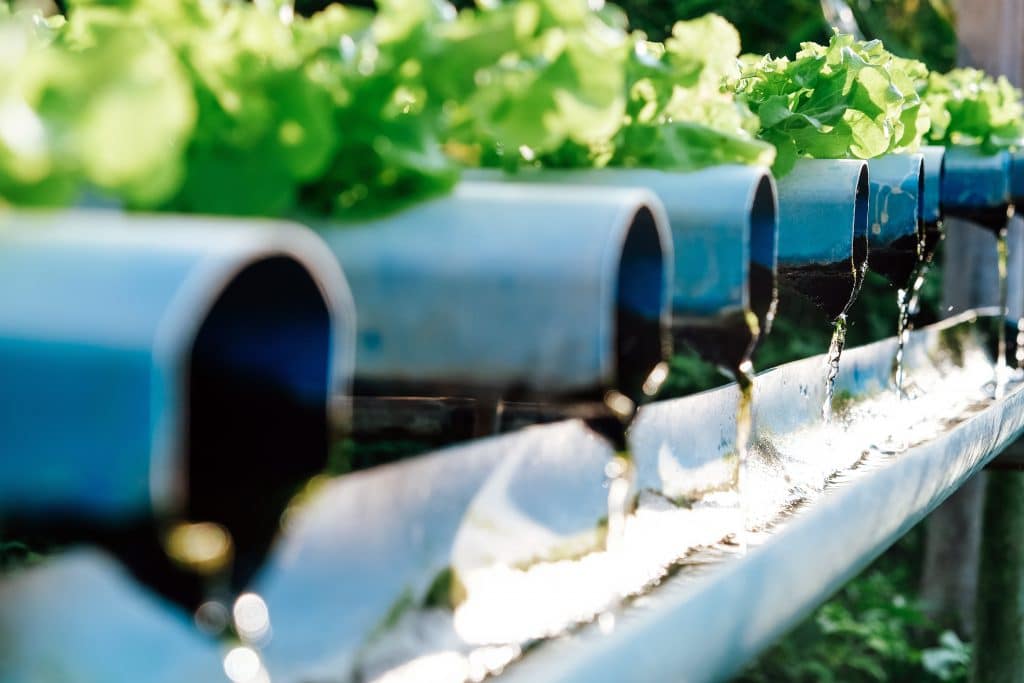
Mistake #8: Overwatering Hydroponic Plants
Since hydroponic plants grow in a water-based solution, overwatering commonly occurs.
Sometimes the reservoir level is too high, the growing medium becomes over-saturated, or the roots become submerged along with the medium. Some signs of overwatering include root rot, slow water drainage, pests, and plant disease.
How to Avoid Overwatering Hydroponic Plants
The key to preventing overwatering your hydroponic plants is a nutrient feeding schedule. Using the nutrient’s product guidelines should be a starting point because the label only accounts for that single solution.
If mixing multiple nutrient solutions, use a nutrient calculator to determine the appropriate feed chart recipes. Nutrient concentration levels will vary based on plant growth stage, hydroponic system, and plant breed. A nutrient feed chart is also essential to preventing imbalanced pH levels.
In addition to plant feed charts, consider using growing automation supplies, such as water timers. It eliminates the need to water your plants manually and prevents overwatering.
Their features give hydroponic growers more feeding control, such as:
- Scheduling water sessions – how often, when, and how long
- Conserving water
- Preventing overwatering
Water timers can automate the feeding process to streamline your plant feeding schedule and prevent overwatering.
Mistake #9: Not Investing in Grow Room Ventilation
Air circulation affects hydroponic plants as much as water circulation. Another common mistake hydroponic growers often mistake is not investing in a proper ventilation system.
Here’s why grow room ventilation is critical to plant health:
- Lowers grow room humidity
- Circulates humid air to prevent over-watering plants
- Prevents the risk of bacteria and fungi growth
- Provides consistent climate conditions
Relying only on open windows is not a sustainable ventilation option because of inconsistent climate changes. Here’s how to provide the right grow room climate control.
Ventilation Equipment for Grow Room Climate Control
There are multiple components of a grow room ventilation system, and each varies based on plant type and grow room size.
Here’s the standard ventilation equipment used to regulate grow room air:
- Fans and blowers – circulate hot/humid air and keep grow room CO2 levels balanced
- Dehumidifiers or humidifiers – regulates relative humidity (RH) levels and support ventilation
- Hygrometers – monitor grow room temperature and RH and measure ventilation equipment performance
Climate control is one of the most comprehensive and critical factors in hydroponic gardening. Once you have a proper ventilation system, you can create the ideal growing conditions for your hydroponic plants.
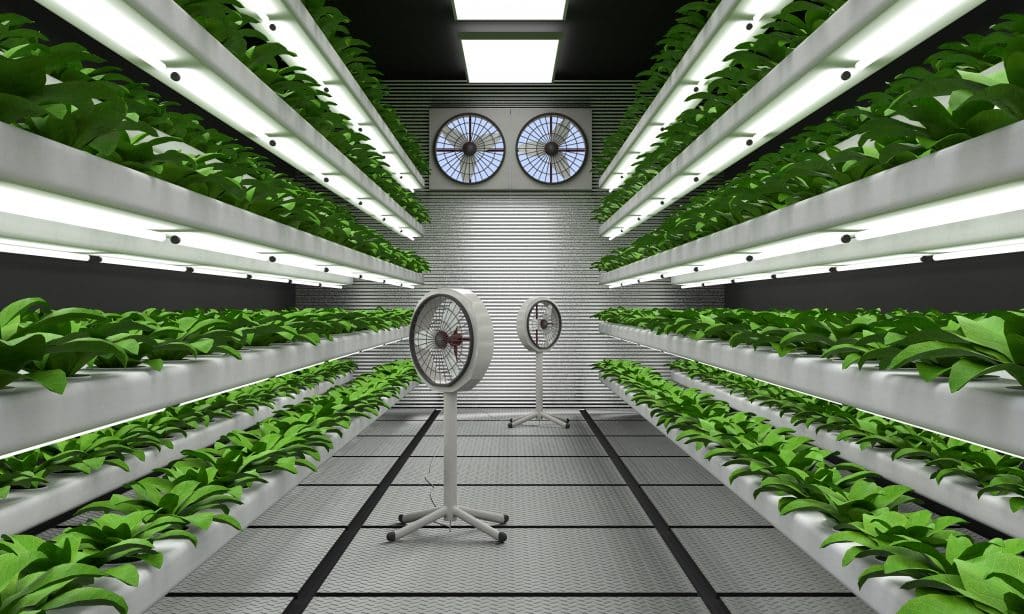
Mistake #10: Extreme Grow Room Temperatures
Hydroponic plants are impacted by temperature as much as conventional soil gardening plants.
What happens to your plants if your water temperature is inconsistent:
- High temperatures – cause heat stress and plant burn
- Low temperatures – prevent nutrient absorption and stunts growth
Hydroponic gardens require a controlled environment to grow. The temperature of the water is one of the essential factors for hydroponic plant growth.
How to Control Grow Room Temperature
Most hydroponic plants require water temperatures between 68°F to 77°F. Each plant growth stage requires various temperature levels too. Seeds and seedlings need the most heat out of all stages as their heat requirements decrease as they grow into flowering, vegetative, and harvest.
Here are some steps to grow room temperature control:
- Measure and monitor temperature with a thermometer
- Use water chillers or heaters for optimal water temperature
- Buy an air conditioner for hotter grow rooms
- Invest in ventilation equipment to circulate hot air
It’s important to note that plant temperature requirements vary based on breed. For example, tropical plants require higher heat levels than other plant types. Preliminary research of your plant’s climate condition requirements is crucial to creating the controlled environment they need.
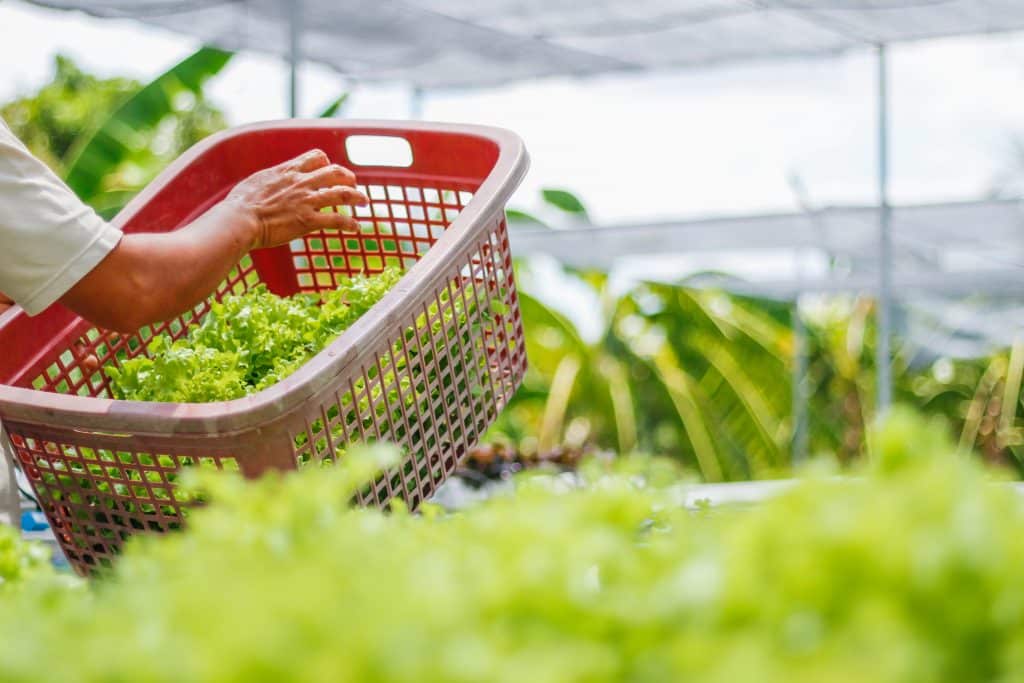
Mistake #11: Impatient Harvesting Practices
Growers may argue over when the best harvest time is and how to tell it’s time. However, all growers agree that a too-early harvest cuts down crop size. Hydroponic growers mistakenly harvest their plants too early or late. Plants harvested too early may result in premature yields as they’re not finished developing. In contrast, plants that are harvested too may result in low-quality yields.
Here’s the best rule of thumb on best harvesting time practices.
The Best Time to Harvest Hydroponic Plants
So, when is the best time to harvest hydroponic plants? Follow the plant breeder’s harvest recommendations, including the average daily growth cycle. The perfect harvest time also varies based on the plant species. Some plants will show signs of being ready for harvest by height, ripeness, or color.
Hydroponic gardeners may need to experiment with multiple harvest times to determine the best maturation percentage. Use a small sample to figure out the best harvest times for your particular plant.
Mistake #12: Shopping from Soil Gardening Shops
Buying hydroponic supplies randomly can be risky. Growers with an immediate need for something may feel the temptation to pick up supplies from a local garden center (catering to traditional soil growing) without preliminary research. This is risky because not every item works the same for all hydroponic systems. It’s best practice to buy supplies specialized for hydronic gardening and (when possible) your specific hydroponic growing method.
Buy Specialized Hydroponic Supplies
You may be wondering, “Why do I need to buy specialized hydroponic supplies?”
There are a few reasons:
- A fertilizer designed for a soil garden differs from a hydroponic garden
- Grow lights, growing media, and seeds are applied differently in hydroponics
Most gardening shops only offer items meant for outdoor growing. Therefore, it’s vital to research sellers and brands to determine suitable suppliers for hydroponic supplies specifically. Try looking for a specialized hydroponic shop nearby.
Shop High-Quality Hydroponic Garden Supplies Today
Now that you know the common mistakes hydroponic growers make, you’ll be prepared for any unexpected cultivation issues.
Ready to maximize your hydroponic gardening efforts? Shop hydroponics supplies, visit one of our nationwide stores, or talk to a GrowPro for questions today at (800) 935-8420!
